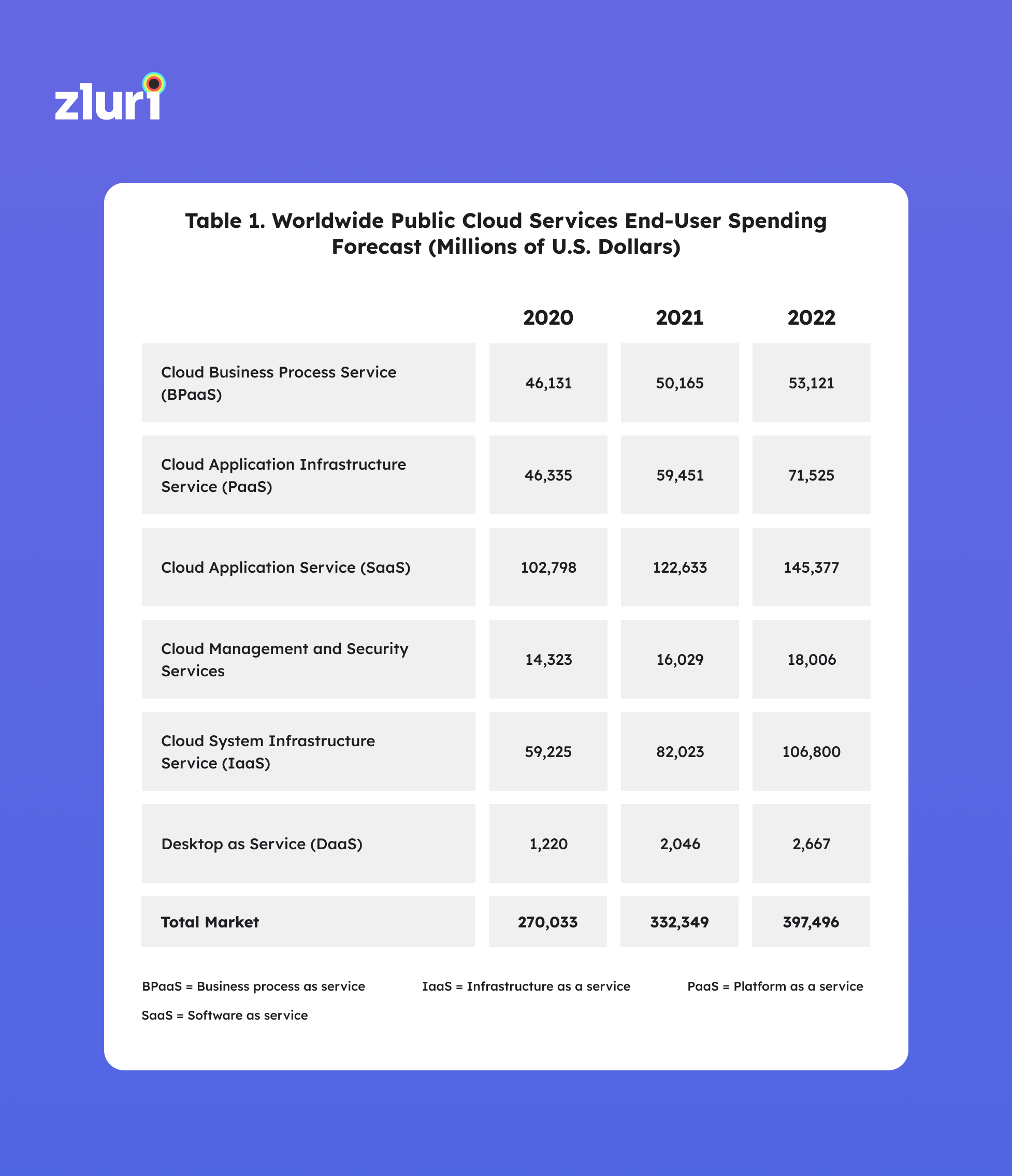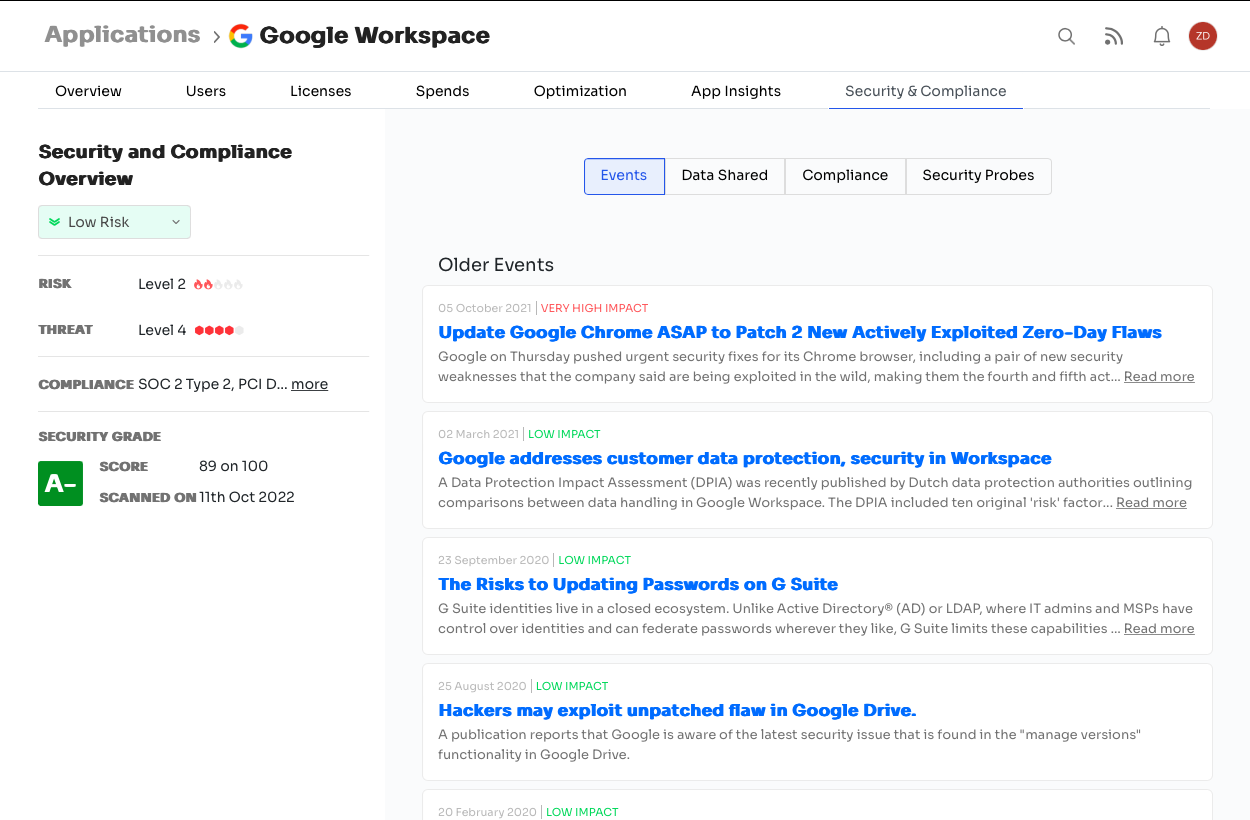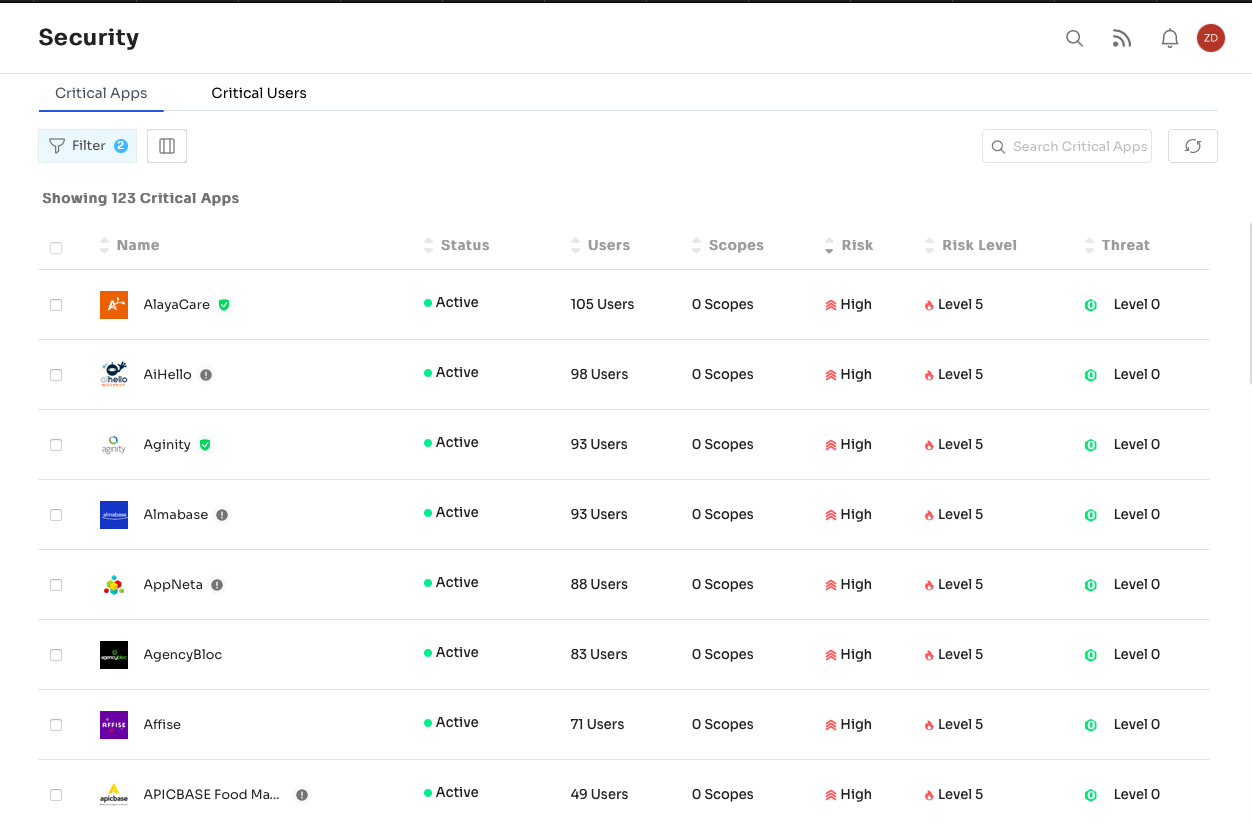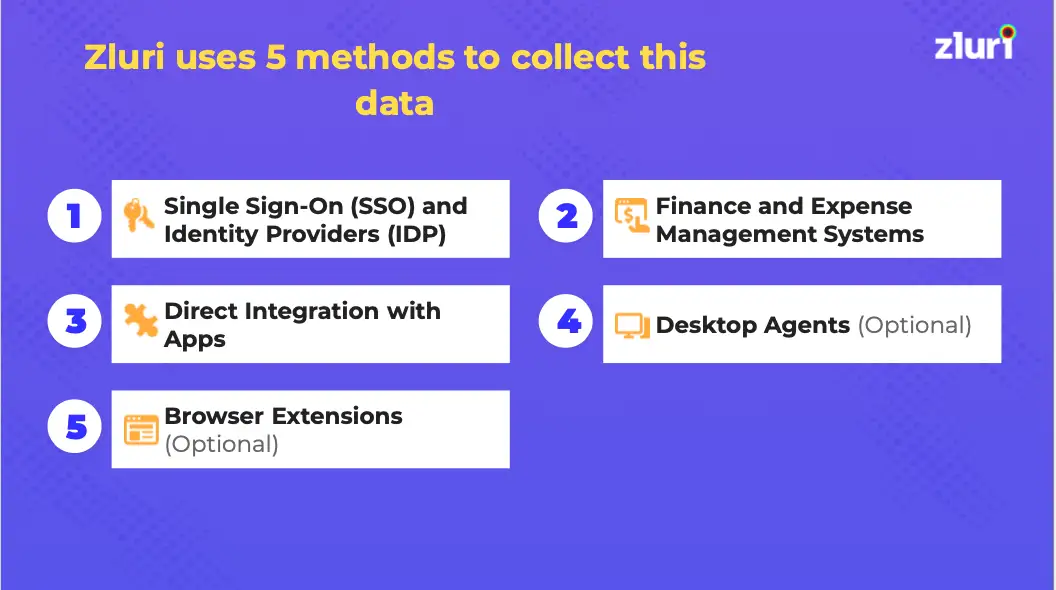SaaS Management
• 6 min read
SaaS Challenges that Affect Financial Planning and Analysis
5th December, 2023
SHARE ON:
In the SaaS world, an increase in SaaS spending can be a concern for organizations. This is due to complexities in managing SaaS apps which impacts the organization's financial planning and analysis. In contrast, it is possible to make effective financial planning and analysis when the organization manages SaaS efficiently.
Post-pandemic businesses have revived with the help of financial planning and analysis. Every business must optimize its budget, and it is possible when organizations effectively do financial planning and analysis.
Financial planning and analysis bridge the organization's IT resources to strategic direction. It allows the organization to monitor and analyze the performance against set parameters.
Financial planning and analysis (FP&A) help organizations develop economic forecasts with relevancy, accuracy, and timeliness to ensure the attainment of strategic objectives and reduce the risk of failure. But sometimes, setting up the FP&A process can be directionless and unorganized in growing organizations. That can have an impact on financial modelling, and revenue forecasting.
Due to easy accessibility to SaaS apps, there is an increase in SaaS spending. According to Gartner's report, in 2021, cloud software spending increased by 23%, from $270 billion to $330 billion. However, the report has illustrated that it's just the beginning. It is estimated that the total SaaS spending will increase from $100 billion in 2020 to $ 140 billion in 2022.

If the SaaS apps are not appropriately managed, it can impact the business's financial performance. For this reason, managing SaaS is crucial to FP&A.
With the help of SaaS management, organizations can improve financial planning and analysis. This can give you insights into SaaS apps. The insights will help the business to forecast accurately & budget SaaS spending, reduce SaaS costs, eliminate overlapping services and unused licenses, eliminate shadow IT, mitigates security and compliance risks, plan renewals, and more.
For effective financial planning and analysis, it is crucial to understand the challenges that SaaS creates in the organization. This article will list the multiple challenges and give you solutions to them successfully.
SaaS Challenges Impacting FP&A + (Solutions)
An increase in SaaS usage can impact financial planning and analysis. We will discuss the various SaaS challenges and the suitable solutions to make effective financial planning and analysis.
1. SaaS decentralization
In a decentralized organization, employees get the flexibility to choose SaaS applications as per their requirements. But with the freedom to access SaaS apps comes security and compliance risks which will lead to monetary and reputation threats for the business.
In decentralized business, there needs to be more data security. The organization's employees get access to most of the SaaS applications, which allows unauthorized users to access sensitive data and misuse it. With easy access to SaaS applications, there are high chances of data breaches and cyberattacks. This can cost a hefty amount to the organization.
Due to the usage of IT-unapproved applications, the IT teams fail to keep track of the SaaS apps. This leads to SaaS governance risks and unnecessary expenses of paying huge penalties, affecting the planned budget.
For proper financial planning and analysis management, an organization needs to opt for a SaaS management platform to get better insights into data and prevent security and compliance risks. This will help businesses to make appropriate financial decisions and reduce SaaS spending.
SMP such as Zluri will help you gain visibility on SaaS applications. For example, you can view whether the application complies with the standard regulations or may cause security threats to the organization.
We offer you a view of all the events, data sharing, compliance, and security probe information for each SaaS application. This information helps you understand each app's threat levels, risk scores, and risk levels.

Further, Zluri can detect the critical apps and users of the organization. Critical apps are those with high threat and risk levels. On the other hand, critical users share sensitive information with critical applications, making the organization vulnerable.

Critical Apps

Critical Users
The insights will help you to stay alert on security and compliance issues. Also, assist you in avoiding paying hefty fines or any payment to retrieve and protect your sensitive data.
Additionally, Zluri will help you eliminate abandoned SaaS applications and prevent you from data breaches and security threats. This will save on SaaS costs by avoiding any expenses to protect your data.
2. Lack of visibility to SaaS auto-renewals
SaaS auto-renewal is associated with every SaaS subscription and contract. So it automatically charges the organization monthly or annually. But it becomes complicated to track and manage the auto-renewals manually for multiple SaaS apps, especially in large organizations.
Due to the auto-renewal of SaaS apps, the organization loses the opportunity to make informed decisions on the right size of unused licenses as per the business requirement and saving on SaaS spending.
If you want to terminate the contract after auto-renewal, you have to pay multiple penalties due to early termination, such as a cancellation fee. You even lose the leverage over critical negotiation due to a lack of visibility to auto-renewals.
Though the auto-renew option offers convenience and specific benefits, it also deprives you of other downstream uses. The organization should have taken the chance to right-size, review, and renegotiate the agreements. Instead, the business can only check out potential alternatives of SaaS applications because of auto-renewal.
A SaaS management platform can do better financial planning and analysis, which will help make efficient cost-saving decisions. This will help you gain visibility to the complete SaaS stack and help you track the auto-renewals.
With Zluri, you can track and manage the renewals of the SaaS applications. It allows you to send alerts or notifications on your upcoming renewal dates automatically, or you can even set alerts manually. For payments, you will receive the default alert 7 days and 1 day before the renewal date, and for contracts, 30 days, 15 days, 7 days, and 1 day prior.

Zluri helps you gain a view of all the costs related to renewals per month wise which will help you to gain a better understanding by setting priorities for SaaS renewal.
3. Complications in forecasting and budgeting SaaS spending
The forecasting and budgeting process gets complex without useful insights into SaaS apps. The insights will help the finance teams to analyze the data and accordingly forecast the SaaS spending in the near future. This forecast will lead to budget allocation, improving financial performance. Data accuracy will decide how precisely you can predict and allocate the budget for SaaS apps.
The root cause of the challenge of forecasting and budgeting is insights. To get accurate data, you need to have suitable solutions that can provide the SaaS apps' granular data. This data will help you in financial planning and analysis. A solution like a SaaS management platform can offer you complete insights into your SaaS landscape and help you with forecasting and budgeting.
Zluri offers you usage monitoring data and app insights. These will help the finance teams in the organization to analyze data efficiently and make strategic decisions on forecasting and allocating the budget for SaaS spending accordingly.
We can help you with the financial planning and analysis of your organization. This will assist you in reducing SaaS spending and optimizing your return on technology investments.
With usage monitoring data, you can identify unused licenses, duplicate apps, etc., and get accurate data with real-time updates. This data will support the finance team in forecasting the SaaS spending and planning the budget accurately per the business requirements.
4. Manually managing SaaS gives inadequate visibility to the organization's SaaS stack
Manually tracking and managing SaaS apps, like using spreadsheets, is tedious, time-consuming, and prone to human errors. This needs more visibility to the complete IT stack, which includes SaaS. SaaS contributes majorly to the organization's IT stack due to the easy sign-up for apps.
Manual SaaS management needs to give more information about software licenses and their usage, spending per app, renewal dates, and more. Gathering this information will take time, and the results may need to be more accurate. In addition, since SaaS is dynamic, it is challenging to track it manually and give real-time updates.
Financial planning and analysis are crucial to generate on-time for the organization, as it gives valuable insights. If time is lost in gathering and combining data manually, then the real job of FP&A will get delayed. This will impact the organization as well as the overall ROI.
A solution that can automate the process for SaaS management and provide insights will help the finance teams to plan and analyze the SaaS budget appropriately. For this reason, you can use Zluri.
Zluri offers you complete visibility into your organization's SaaS landscape. It uses five different discovery methods to identify all the apps used in the organization. The discovery methods include SSO, finance & expense management, direct integration through APIs, desktop agents (optional), and browser extensions (optional).

We provide real-time updates on SaaS apps and give you granular data. This data will help the finance teams analyze and plan accordingly to improve the organization's financial performance.
Further, the data will help to detect unused licenses, duplicate or redundant apps, abandoned apps, etc., which will prevent you from SaaS wastage. We will assist the finance teams to have control over the SaaS spending and increase the return on technology investments.
About the author
Tathagata is a Technical Content Writer with 4+ of experience in the SaaS industry. He has a keen eye for research and understanding macro trends in the SaaS & AI-based technology space. He has worked across several marketing & strategy roles in various domains like banking, e-commerce, and education sectors. In his leisure time, Tathagata is a full-time PC gamer.
Related Blogs
See More
Subscribe to our Newsletter
Get updates in your inbox
